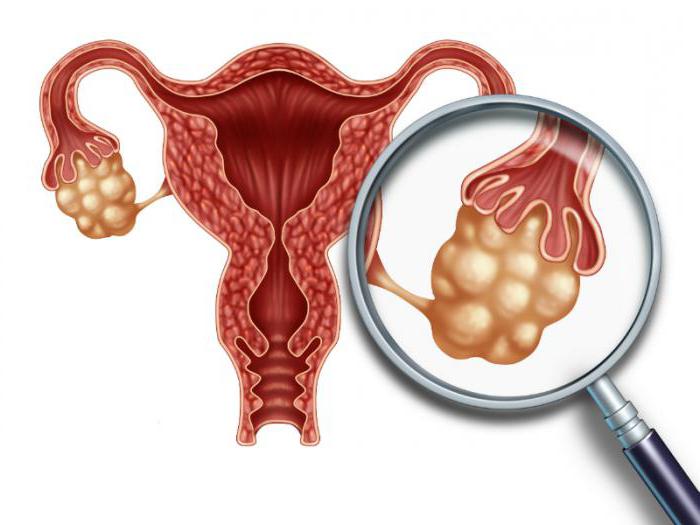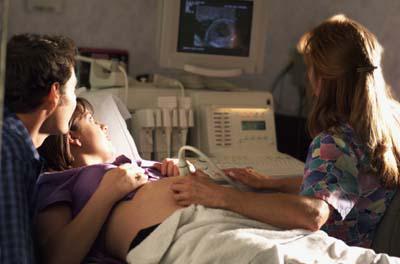A pressing problem throughout the world is female infertility. Statistics found that every fifth young couple can not conceive a child. Over 50 million couples need assisted reproductive technology. The surgical path is one of the important ways to solve this problem, where medicine has advanced far ahead. With the introduction of nanotechnology, such an event is held with the slightest negative outcomes. Very often, women resort to such a lightweight modern technique as laparoscopic ovarian drilling. This will be discussed in this article.

Basic concepts
We will analyze what laparoscopy and ovarian drilling are. The most important cause of infertility is the development of the so-called polycystic ovary syndrome. The only appropriate way to get rid of this polycystic and get pregnant is ovarian drilling. Translated from English, this word means "piercing." What kind of method is ovarian drilling? By it is meant a surgical operation during which small punctures (incisions) of 2 mm are made in the ovaries. This leads to stimulation of egg maturation and creates the prerequisites for further conception of the baby.
Nowadays, such surgical interventions are done laparoscopically. What is laparoscopy? The first part of the Greek word laparo means "belly" and skopeo means "watch." Laparoscopy is a type of surgical operation and diagnostic examination of internal organs. What is the difference between laparoscopy and other surgical interventions? It is conducted through relatively small holes, and conventional operations require large incisions. Laparoscopy is performed using microprocessor technology. This procedure replaced the more traumatic, which was used in gynecology - resection.

Signs of disease requiring ovulation stimulation
What happens with polycystic ovary and why a woman can not get pregnant? Egg maturation in this disease is impossible, and it does not enter the fallopian tube, where ovulation usually occurs. The sclerocystic membrane surrounding the ovaries interferes with this exit of the egg.
Polycystic can be primary and secondary. In the primary, there is a violation of the menstrual cycle and egg maturation, and in the secondary, the formation of a sclerocystic membrane. This can be caused by hormonal failure in the body or chronic inflammation of the genitourinary system.
What causes the disease and what are the main manifestations of polycystic
The causes of polycystic ovary syndrome leading to infertility are as follows:
- Violation of the endocrine system. There is a malfunction in the ovaries, adrenal glands, pituitary gland, and thyroid gland.
- Long stressful situations, constant breakdowns of the nervous system.
- Violation in the formation of female genital organs in youth due to frequent infectious diseases.
- Genetic prerequisites for this pathology.
In every sick woman, polycystic ovary manifests itself in different ways. Nevertheless, there are a number of signs most often found in affected women:
- Malfunctions occur in menstruation, over time, it may be completely absent. Sometimes uterine bleeding appears.
- Ovulation in the fallopian tubes does not occur. There is no chance of becoming pregnant.
- In various areas of the skin (face, chest, back), severe acne rashes occur.
- The ovarian membrane thickens, and small cysts appear on it.
- There is lightning-fast weight gain in women with a normal diet. This can lead to diabetes.
- Hypertension often develops, which is accompanied by darkening of the face, lower ribs and inguinal region.
- Women experience depression and stress, anxiety, and chronic fatigue.

The positive aspects of such an intervention
Similar problems with women's health are first resolved by preliminary drug therapy, adherence to a special diet. Very often this gives positive results - 60% of women manage to get pregnant. If no improvement is observed, then ovaries are drilled. This intervention has the following positive aspects:
- There is no need to take a long course of taking medications and visits to a gynecologist.
- The risk of the formation of several fruits at once is reduced, which is often found after stimulation of ovulation with drugs.
- The operation is quick and safe for women.
- Drilling helps to recognize the level of patency of the fallopian tubes, makes it possible to separate adhesions during surgery.
- After laparoscopic intervention, the scar completely dissolves, the rehabilitation period passes in a short time.
The period of preoperative preparation
Before ovarian drilling, the patient must perform some preoperative procedures:
- blood tests to identify the group and Rh factor;
- urinalysis according to the general scheme;
- study of the patient's cardiogram and lung image;
- genitourinary ultrasound;
- general gynecological examination;
- tests from the vagina;
- consultation points with other specialists.
The operation requires mandatory cleansing of the intestines from gases and feces. Their failure can lead to tissue damage. Before the procedure, the patient should not drink water and eat food. Laparoscopic ovarian drilling is performed under general anesthesia.

Drilling Technique
Testicle Drilling is a gentle surgical procedure. The operation is carried out in several stages:
- The patient is given general anesthesia, after which three punctures are performed in the abdominal cavity, through which the necessary tools will be inserted.
- Using a special needle, carbon dioxide is introduced into the abdominal cavity, which allows you to see the internal organs.
- A polycystic ovary is examined and its condition is analyzed (how much it increased in size, darkened, covered with cysts).
- On the organ, 4-6 notches are carried out, other possible pathologies are eliminated.
- Punctures are sutured and carbon dioxide is eliminated from the abdominal cavity.
Sewing is done with several cosmetic stitches. Punctures (cuts) on the ovaries are placed at a certain distance from each other so that scars do not occur.
This operation reduces the concentration of androgens circulating in the blood around the ovary. After ovarian diving, ovulation is restored.
Several ways of laparoscopy
The above described ovarian diving is related to the laser method. Laser is the most effective way of laparoscopy.
A highly efficient technology is the ultrasonic method. Such an operation is performed using an ultrasonic scalpel. This method allows you to efficiently and reliably perform the operation, preserving all the tissues of the organs.
Sometimes the so-called electric drilling is practiced. Incisions in the ovaries in this case are performed using electric current.

Drill both ovaries
After carefully examining the pathology, doctors decide whether to drill both ovaries. Most often it happens.
After surgery, the patient should take additional hormone therapy. Within 12 weeks, the woman controls the process of ovulation. If it is absent, the patient should continue to take hormones.
Both electric and laser drilling are equally effective, but electric is more affordable. The menstrual cycle normalizes usually after surgery. Sometimes a delay of menstruation for 2-3 months is possible. In this case, the patient is prescribed a drug, often it is "Dufaston".
Consequences of Ovarian Drilling
Recovery after laparoscopic drilling takes place in a fairly short time. Large vessels are not affected during the operation, so the procedure is absolutely safe for health. The sometimes occurring consequences include the appearance of bleeding and the development of an allergy to anesthesia. The following complications very rarely occur:
- temperature rises;
- pains occur in the lower abdomen in the form of contractions;
- dizzy, weakness appears in the body;
- dark discharge occurs.
Most often, recovery is quick, the patient is already discharged from the hospital on the second day. The doctor recommends that women abstain from sexual activity and physical activity. Additionally, physiotherapy and vitamins are prescribed.
The sutures are removed after a week, and after half a month an ultrasound scan is performed, which will show how much the woman has restored reproductive function.

Ovarian Drilling and Pregnancy
Ovarian function after incisions is stimulated, and ovulatory function is restored. But this is not a permanent effect. After about a year, reproduction decreases again. Pregnancy after ovarian drilling does not need to be postponed for a long time. It is best if this happens in the first six postoperative months.
To increase the chance of becoming pregnant, folic acid is additionally prescribed, an active lifestyle, refusal of alcohol and smoking, and the intake of vitamin products are recommended. The likelihood of conception after these measures is much higher.

Patient reviews about the procedure
Many readers are interested in ovarian drilling and pregnancy. Reviews of this surgical intervention indicate that the formation of the follicle after it becomes more intense. Thanks to this, there is a great chance to get pregnant.
Reviews of ovarian drilling make it possible to conclude that polycystic disease, which interferes with pregnancy and gestation, is no longer a sentence. Many patients were convinced that this procedure is absolutely safe and brings effect. It also helps to solve the problem in a short time, does not require a long rehabilitation period. Drilling brought many couples a chance to experience the joy of becoming parents.
No one decides on the use of drilling, except for the patient herself. The knowledge of modern doctors allows you to take into account all the psychological and physiological characteristics of women. Previously, the patient is offered an examination and conversation with a psychotherapist. The process of ovarian drilling has been filmed many times, where you can clearly see the whole procedure.